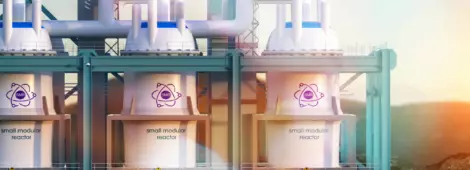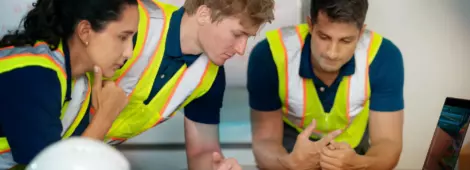
Preparedness in Action: Is Your Healthcare Facility Equipped to Handle the Next Active Threat?
by Joseph Reppucci
While healthcare professionals are no strangers to stress, the rise in targeted violence in healthcare facilities is pushing the limits of what staff, systems and safety protocols can withstand.
Consider the recent hospital incident, where a gunman took an employee hostage during a tense hour-long standoff. Or the nurse who suffered permanent injuries after an assault by a patient in the psychiatric unit. These aren’t isolated incidents or statistics – they’re real events with lasting consequences for everyone involved.
For too long, conversations about healthcare security have focused narrowly on active shooter scenarios. But the reality is much broader. Threats can come in many forms – vehicle attacks, fire as a weapon, edged weapons or improvised explosives – and healthcare facilities must prepare for all of them. The stakes are simply too high to continue relying on outdated emergency plans and reactive strategies.
True preparedness requires a proactive, structured approach. One that integrates all four phases of emergency management: mitigation, prevention, response and recovery.
Mitigation: Making Facilities Less Vulnerable
Mitigation is the first line of defense – it’s about making your facility a less appealing and accessible target. That starts with identifying vulnerabilities and taking proactive, preventive actions.
Key strategies include:
- Crime Prevention Through Environmental Design (CPTED): Are there unsecured entrances, blind corners or poorly lit spaces that could invite threats?
- Access Control: Do you know who is entering your facility, when and why? Can you verify in real time?
- Surveillance: Are your security cameras functioning and actively monitored?
- Safe Zones: Have you designated secure lockdown rooms or spaces that staff and patients can safely shelter in during an emergency?
- Physical Barriers: Does your facility include features like bollards, reinforced doors and restricted-access areas that can help prevent vehicle rammings and forced entries.
Mitigation isn’t about checking regulatory boxes – it’s about thinking ahead. A strong physical and procedural security foundation can deter potential attackers and limit harm if an event occurs.
Prevention: Stopping Violence Before It Starts
Prevention begins with awareness and is sustained by action. Staff are often the first to notice warning signs of escalating behavior, but only if they’re trained and empowered to act.
Consider these key elements:
- Recognizing Warning Signs: Are staff confident in identifying signs of agitation, threats or mental health deterioration?
- De-escalation Techniques: Does your team know how to diffuse tense situations safely and professionally?
- Routine Drills: Have employees practiced responding to various threat types beyond an active shooter scenario?
- Law Enforcement Coordination: Does your facility have a working partnership with local police, including a shared response strategy?
In a 2024 vehicle ramming incident, the driver intentionally drove into a crowd. Earlier recognition of erratic behavior – and better barriers – could have made a difference. Prevention is about creating the opportunity to intervene before tragedy strikes.
Response: When Seconds Matter, Will Your Team Be Ready?
When a critical incident occurs, every second matters. An effective response must be immediate, coordinated and confident. Training should go beyond theory, preparing staff to act under pressure through realistic, scenario-based exercises that are conducted in a controlled, trauma-informed environment.
Let’s take the “Run, Hide, Fight” model and explore how it applies across different types of threats. This framework, developed by the U.S. Department of Homeland Security, remains one of the most effective and accessible personal safety models available today. Why? Because it’s easy to understand, free to implement and part of a federally endorsed training program – requiring no costly equipment or specialized tools, just clear guidance and practice. Best of all, it’s adaptable to a wide range of emergencies beyond just active shooter scenarios.
Here's how the model applies in various threat situations:
Active Shooter
- Run: Get out quickly if a safe exit is available.
- Hide: If escape isn’t possible, secure the room, lock the door, shut off the lights and silence all phones.
- Fight: While hiding, locate weapons of opportunity – fire extinguishers, IV poles, chairs, anything with weight and reach. If confronted, be ready to fight back with full force.
Fire as a Weapon
- Run: Evacuate immediately if safe.
- Hide: If trapped, seal doors, block vents and stay low to avoid smoke.
- Fight: Use extinguishers only if trained and if fire conditions allow.
Vehicle Ramming
- Run: Move perpendicular to the vehicle’s path to avoid being struck.
- Hide: Take cover behind concrete structures, pillars or vehicles.
- Fight: If the attacker exits the vehicle and continues the assault, be prepared to act. Improvise weapons using everyday objects that may be in the area.
Edged Weapons
- Run: Create distance immediately.
- Hide: Use furniture, carts and equipment as shields.
- Fight: Improvise with any available tools – defense is critical if cornered.
Training should never overwhelm staff. It should build the muscle memory needed to act under pressure and reinforce that everyone plays a critical role in keeping the facility safe.
Recovery: What Happens After the Attack is Just as Important as What Happens During it
A facility’s response doesn’t end when the threat does. How leadership navigates recovery is critical – not just for continuity, but for restoring trust and protecting long-term staff well-being.
Core recovery actions include:
- Clear + Consistent Communication: Reassure staff, patients and families with timely and transparent updates.
- Mental Health Support: Offer immediate access to trauma counseling and long-term behavioral health support.
- After-Action Reviews (AARs): Identify what worked, what didn’t and how systems can be strengthened.
- Immediate Security Enhancements: Address access control vulnerabilities, communication breakdowns and coverage gaps.
- Rebuild Operations with Intention: Resume clinical care thoughtfully, acknowledging staff fatigue and emotional strain.
- Translate Lessons into Action: Update policies, protocols and training based on real-world insights gained during the emergency.
After a 2013 marathon bombing, many hospitals rewrote their triage and mass casualty protocols based on what they learned. Your recovery phase sets the tone for whether your facility bounces back stronger or not at all.
What Healthcare Facilities Should Do Now
- Schedule a CPTED + Threat Assessment: Identify security blind spots and vulnerabilities before someone else does.
- Review + Update Your Emergency Response Plan: Ensure it covers multiple threat scenarios, not just one type of event.
- Train Staff on Prevention + Early Action: Recognizing and de-escalating threats is your first line of defense.
- Conduct Trauma-Informed Drills: Simulate different types of threats in a safe, structured way that builds staff confidence.
- Engage Senior Leadership: Emergency preparedness is a leadership responsibility. CMS (42 CFR §482.15), The Joint Commission (EM.10.01.01), DNV (EM.2.0 & EM.3.0), NFPA 99 and OSHA (29 CFR §1910.38 & §1910.39) all require leadership participation.
How Jensen Hughes Can Help
No two healthcare facilities are the same, and no one-size-fits-all approach can effectively address the unique risks each facility faces. That’s why Jensen Hughes delivers customized, holistic preparedness solutions.
We support our clients with:
- CPTED + threat vulnerability assessments
- Emergency plan development + policy reviews
- Training for staff, security + executives
- Tabletop + full-scale exercises
- Post-incident support + recovery planning
We take a comprehensive approach to emergency readiness, viewing each threat scenario through multiple lenses:
- Emergency Management Planning: Mitigation, preparedness and command-level coordination.
- Individual + Team Response: Empowering frontline staff, security teams and leadership.
- Law Enforcement + EMS Integration: Seamless coordination with police, fire and EMS, including tourniquet use, trauma care protocols and rapid transport.
- Behavioral Health + Recovery: Addressing staff well-being long after the event ends.
- Continuity of Operations: Ensuring your mission continues under extreme conditions.
Preparedness doesn’t start when the incident begins, and it certainly doesn’t end when the last siren fades. If your facility isn’t fully ready for what’s next, let’s change that today.

Joe brings 24+ years of emergency services, healthcare emergency management, public health emergency management, and executive leadership and response operations. He is a respected industry leader, trainer, and emergency operations…












